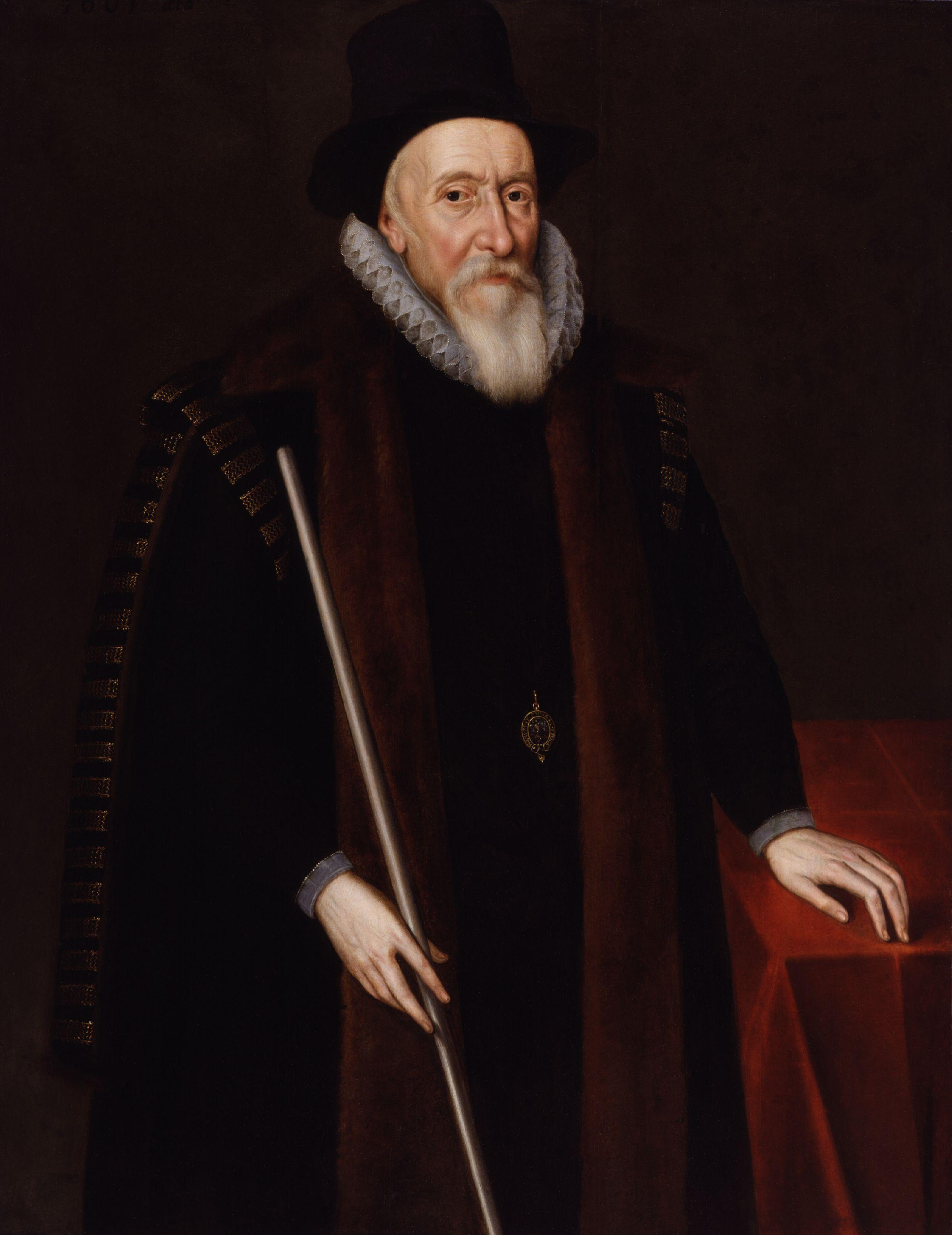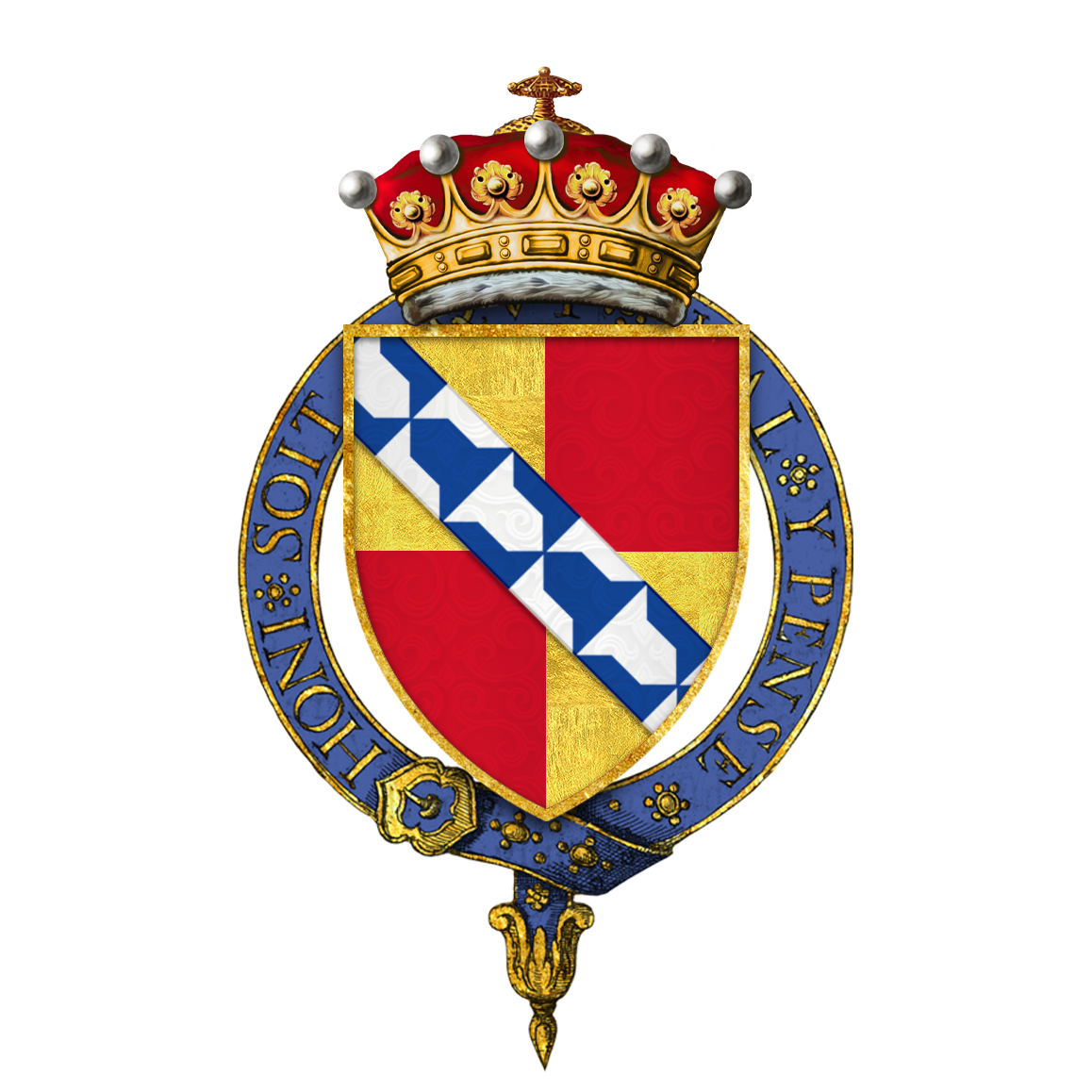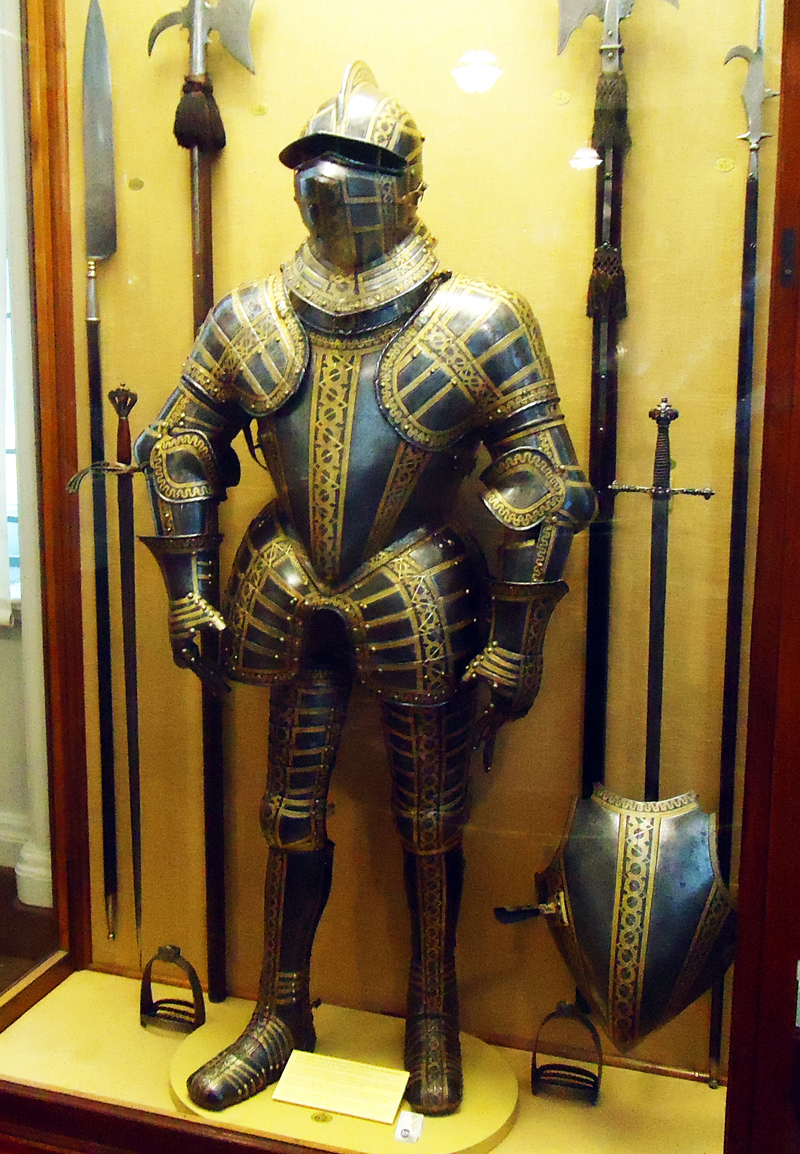1. Overview
Thomas Sackville, 1st Earl of Dorset (1536 - 19 April 1608) was a prominent English statesman, poet, and dramatist who played a significant dual role in Elizabethan and early Jacobean England. As a political figure, he served extensively in the House of Commons and held high offices, notably as Lord High Treasurer from 1599 until his death. In his literary career, he profoundly influenced English literature, particularly through his pioneering use of blank verse in drama. His contributions spanned both the demanding world of government and the burgeoning artistic landscape, reflecting a commitment to public service and the advancement of English cultural forms. This article examines Sackville's life and multifaceted career, exploring his impact on the political and literary spheres of his era.

2. Early Life and Education
Thomas Sackville was born in 1536 at Buckhurst, located within the parish of Withyham, Sussex. He was the only son of Richard Sackville, a Member of Parliament and financial minister who was also a cousin to Anne Boleyn, Queen Elizabeth's mother. His mother, Winifrede, was the daughter of Sir John Bridges, who served as Lord Mayor of London.
Sackville received a comprehensive education. He studied at Sullington Grammar School before attending St John's College, Cambridge, where he earned his Master of Arts degree, and Hertford College, Oxford. He further pursued legal studies at the Inner Temple, one of the Inns of Court in London, and was subsequently called to the bar in 1558. During his younger years, from 1561 to 1567, Sackville was reportedly an active member and Grand Master of a Freemasonic lodge, a detail that highlights a lesser-known aspect of his early life.
3. Political Career
Thomas Sackville embarked on an extensive political career that spanned from the reign of Mary I through the entirety of the Elizabethan era and into the early years of the Jacobean era under James I. His career was marked by service in Parliament, critical diplomatic missions, and the holding of some of the highest government offices, showcasing his dedication to public service within the evolving English state.

3.1. Parliamentary Service
Sackville first entered the House of Commons in 1558, serving as one of the knights of the shire for Westmorland during the reign of Queen Mary I. Following the ascension of Queen Elizabeth I, he continued his parliamentary service, being elected to represent East Grinstead in 1559. From 1563 until 1567, he served as a Member of Parliament for Aylesbury. His tenure in the House of Commons concluded in 1567 when he was elevated to the House of Lords.
3.2. Diplomatic Missions
Sackville undertook several significant diplomatic assignments during his career. In 1566, he traveled to Rome, where he was unexpectedly arrested and detained for fourteen days. The precise reasons for his imprisonment remain unclear, but it occurred during a period of considerable tension between England and the Papacy. That same year, his father's death prompted his return to England.
In 1571, Sackville embarked on his first major diplomatic mission to France. He was dispatched to convey Queen Elizabeth's congratulations to Charles IX of France on his marriage to Elizabeth of Austria, the daughter of Emperor Maximilian. More crucially, his mission involved negotiating a proposed alliance between Queen Elizabeth and Francis, Duke of Anjou, the brother of the French king.
In 1587, he was sent as an ambassador to the United Provinces to address their complaints against the Earl of Leicester. Although he performed his duties with integrity, Leicester, who held considerable influence, managed to secure his recall. Upon his return, Sackville faced a period of confinement in his own home for nine or ten months, a testament to the political rivalries and pressures of the time. Queen Elizabeth initially expressed her displeasure, describing his diplomatic judgment as "shallow." However, his disgrace was short-lived, as in 1588 he was invested with the prestigious Order of the Garter, and was subsequently sent on further missions to the Netherlands in 1589 and 1598.
3.3. Government Offices and Titles
Sackville's career saw him rise through various high-ranking governmental positions and acquire significant titles. In 1567, Queen Elizabeth I created him Baron Buckhurst, of Buckhurst in the County of Sussex, thereby elevating him to the peerage and securing his seat in the House of Lords. This move was partly intended to strengthen the Protestant faction within the peerage. He served as a Privy Councillor from 1582 to 1586.
His administrative roles included serving as Lord Lieutenant of Sussex from 1570 to 1585, and then again from 1586 until his death in 1608. He also held the office of Custos Rotulorum of Sussex from before 1573 until 1608. In 1591, Sackville was elected Chancellor of the University of Oxford, a position he held until his death.
In 1599, he succeeded the long-serving Lord Burghley as Lord High Treasurer, a critical role managing the nation's finances. He held this post until his death, proving to be a capable, albeit uninspired, financial manager who brought stability to the treasury. Following the death of Queen Elizabeth I in 1603 and the Union of the Crowns under King James I, Sackville was confirmed in his office as Lord Treasurer. In 1604, King James I further honored him by creating him Earl of Dorset.
Sackville amassed a considerable fortune through his extensive land dealings across numerous counties and investments in the iron foundry business. His properties included Groombridge Place in Kent, Knole House in Sevenoaks, Kent, Michelham Priory in East Sussex, and Dorset House near Fleet Street, London, which was later destroyed in the Great Fire of London. He also acquired the manor of Bexhill in 1570, granted by Queen Elizabeth. Additionally, he was the last Sackville to be lord of the manors of Bergholt Sackville (named after his family) and Mount Bures in Essex, which he sold in 1578 after they had been in the Sackville family for 459 years. In August 1605, he recommended a "Mr. Thorpe" to survey and create "plots" for the rebuilding of Ampthill for Anne of Denmark and Prince Henry.
3.4. Participation in Major Trials
As a prominent peer and government official, Sackville was involved in several high-profile trials of the era. In 1572, he was among the peers who sat on the trial of Thomas Howard, 4th Duke of Norfolk. In 1586, he was appointed a judge in the trial of Anthony Babington and was notably selected to convey the confirmed sentence of death to Mary, Queen of Scots. In 1589, he served as one of the judges in the trial of Philip Howard, 20th Earl of Arundel. In 1601, as High Steward, he presided over and pronounced sentence on the Earl of Essex, who had been a political rival and opponent, as well as a competitor for the chancellorship of Oxford.
4. Literary Contributions
Beyond his distinguished political career, Thomas Sackville made significant and lasting contributions to English literature, particularly as a poet and dramatist. His work played a crucial role in the development of English dramatic forms and poetic expression.
4.1. Early Poetry and "The Mirror for Magistrates"
Sackville gained early literary recognition for his contributions to the 1563 edition of The Mirror for Magistrates, a highly influential collection of narrative poems exploring historical and moral themes. His most notable poems within this anthology are "Induction" and "Complaint of Henry, Duke of Buckingham." "Induction" is particularly celebrated for its powerful use of allegory and its sombre, stately tone, describing the poet's metaphorical journey to the infernal regions where he encounters personified figures representing various forms of human suffering and terror.
4.2. Gorboduc
In 1561, Thomas Sackville co-authored Gorboduc with Thomas Norton. This play is historically significant as the first English play to be written in blank verse, a pivotal innovation for English drama. The play's thematic content centers on the dangers and consequences of political rivalry and unchecked ambition within a royal family. Gorboduc was initially performed as part of the Christmas festivities of 1560-1561 by the society of the Inner Temple, before receiving a more public performance on 18 January 1561 before Queen Elizabeth I at Whitehall. While Sackville is recognized as the co-author, some scholars have argued that the play may have been his sole work, highlighting his substantial individual contribution to this foundational piece of English drama.
5. Personal Life and Family
In 1555, Thomas Sackville married Cicely Baker, the daughter of the prominent politician Sir John Baker and his second wife Elizabeth Dineley. Together, they had seven children: four sons and three daughters.
Their children included:
- Robert Sackville (1561-1609), who succeeded his father as the 2nd Earl of Dorset.
- Henry Sackville
- William Sackville (1570-1591), who was knighted by Henry IV of France.
- Thomas Sackville
- Anne Sackville, who married Sir Henry Glemham.
- Jane Sackville, who married Anthony-Maria Browne, 2nd Viscount Montagu.
- Mary Sackville, who married Lord Bergavenny.
His daughters, Anne and Mary, were particularly renowned for their education and accomplishments. As John Chamberlain noted in April 1606, they were considered "complete women for learning, language, and all other rare qualities."
Sackville's interests extended beyond politics and literature. In approximately 1587, he received a royal license to commission a suit of armor from the distinguished Greenwich Royal Workshops.

This finely etched, blued, and gilt armor, designed as a garniture for the field, stands as one of the best-preserved and most exquisite examples of the Greenwich school of armor-making. It is now housed in the Wallace Collection in London. A similar suit, featuring the same construction and decorative scheme, which belonged to Sir James Scudamore, can be viewed at the Metropolitan Museum of Art in New York City.
In April 1607, Sackville, concerned for his family's future, wrote to George More of Loseley seeking his influence to arrange the marriage of the Countess of Cumberland's daughter, Lady Anne Clifford, to his grandson, Richard Sackville. A year prior to his death, in June 1607, during a period of illness, James Hay from the king's bedchamber visited him, delivering a ring set with diamonds and the King's message hoping Sackville would wear it and "live as long as the diamonds of that ring... did endure." Sackville recovered temporarily and drafted his will in August before his eventual death the following year.
6. Death
Thomas Sackville died suddenly on 19 April 1608. He suffered an apparent stroke, which was described as "a dropsy on the brain," while seated at the council table during a meeting. His unexpected demise brought an abrupt end to a long and distinguished career in public service. His funeral was held at Westminster Abbey, a testament to his high standing, and he was subsequently interred in the Sackville family vault at Withyham Parish Church in East Sussex.
7. Legacy and Assessment
Thomas Sackville's legacy is multifaceted, marked by his significant contributions to both English governance and the burgeoning literary scene of the Elizabethan and Jacobean eras. As Lord High Treasurer, he was recognized as a capable financial manager, providing crucial stability to the realm's economy during a period of transition. His political career, while serving the monarchy, demonstrated integrity and strategic acumen, particularly in his diplomatic engagements. Even when facing temporary disgrace, he managed to regain royal favor, highlighting his resilience and continued value to the Crown.
From a literary perspective, Sackville's impact was pioneering. His co-authorship of Gorboduc marked a revolutionary moment in English drama by introducing blank verse, a form that would become foundational for later playwrights like William Shakespeare. His contributions to The Mirror for Magistrates also showcased his profound poetic talent, demonstrating his ability to craft powerful narratives with allegorical depth and a somber, reflective tone. While his political roles placed him within the hierarchical structures of the time, his literary endeavors pushed artistic boundaries and explored themes of political rivalry and governance, implicitly contributing to broader intellectual and cultural discourse. His life exemplifies a figure who navigated the complexities of court politics while simultaneously enriching the cultural landscape of his nation.